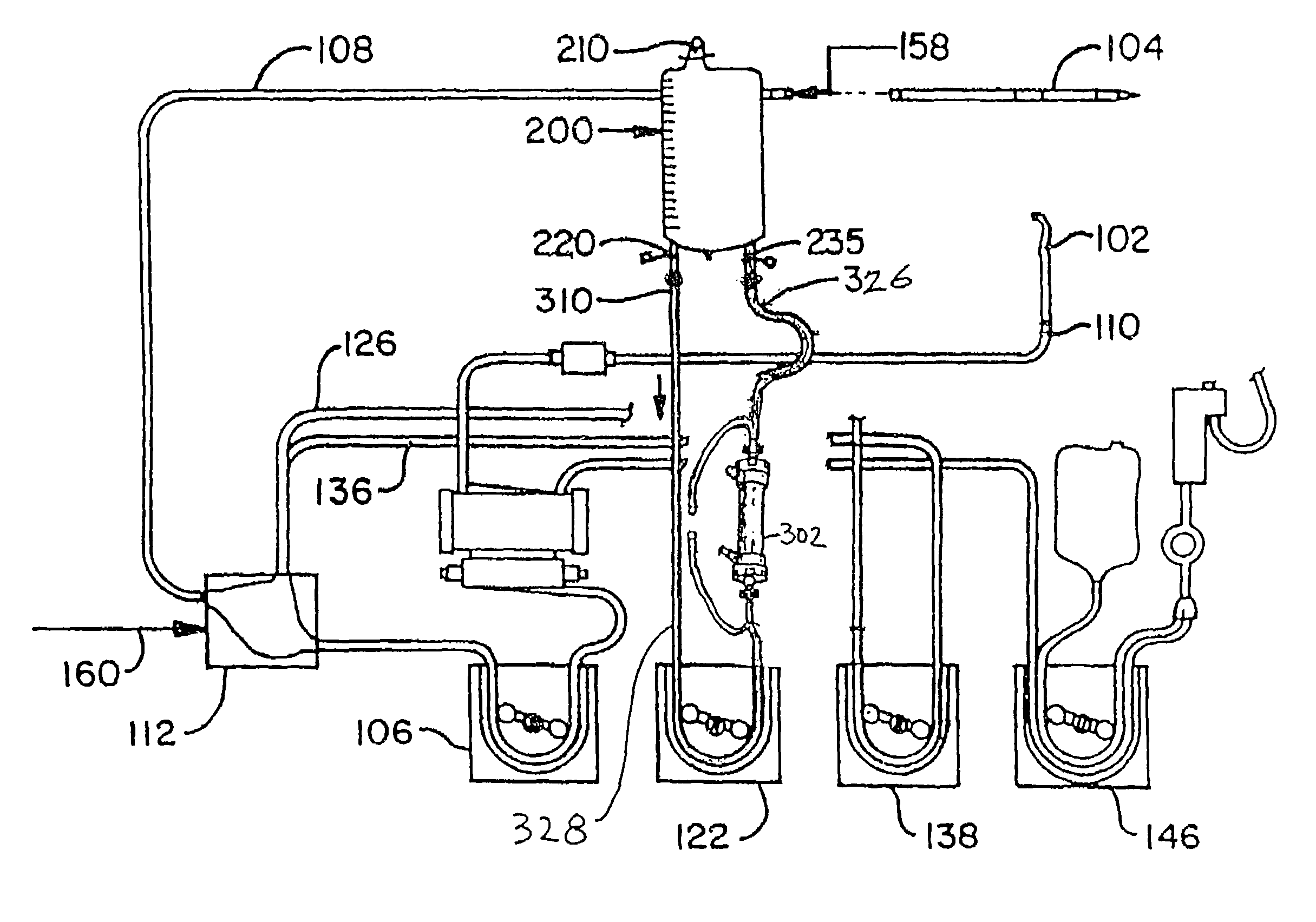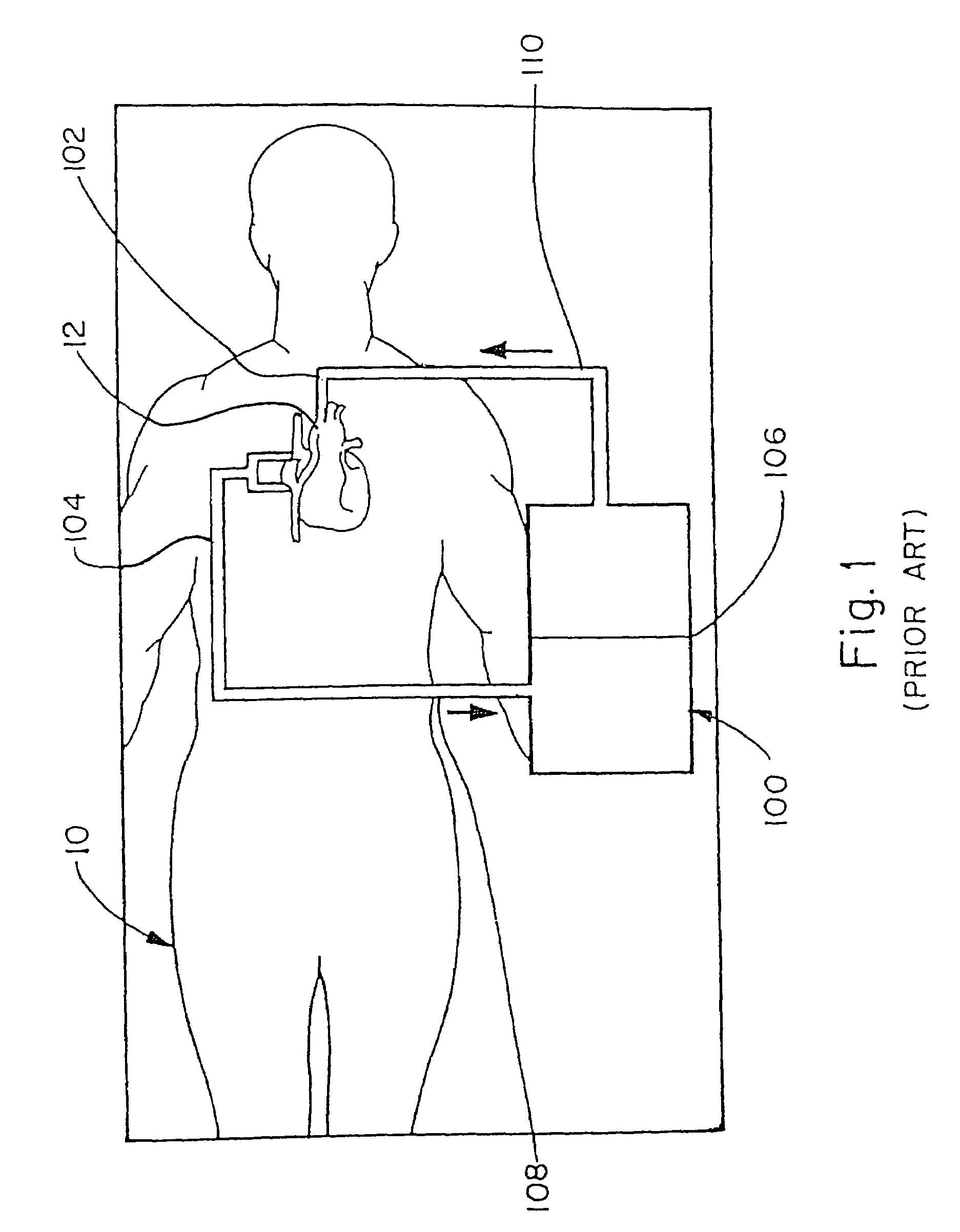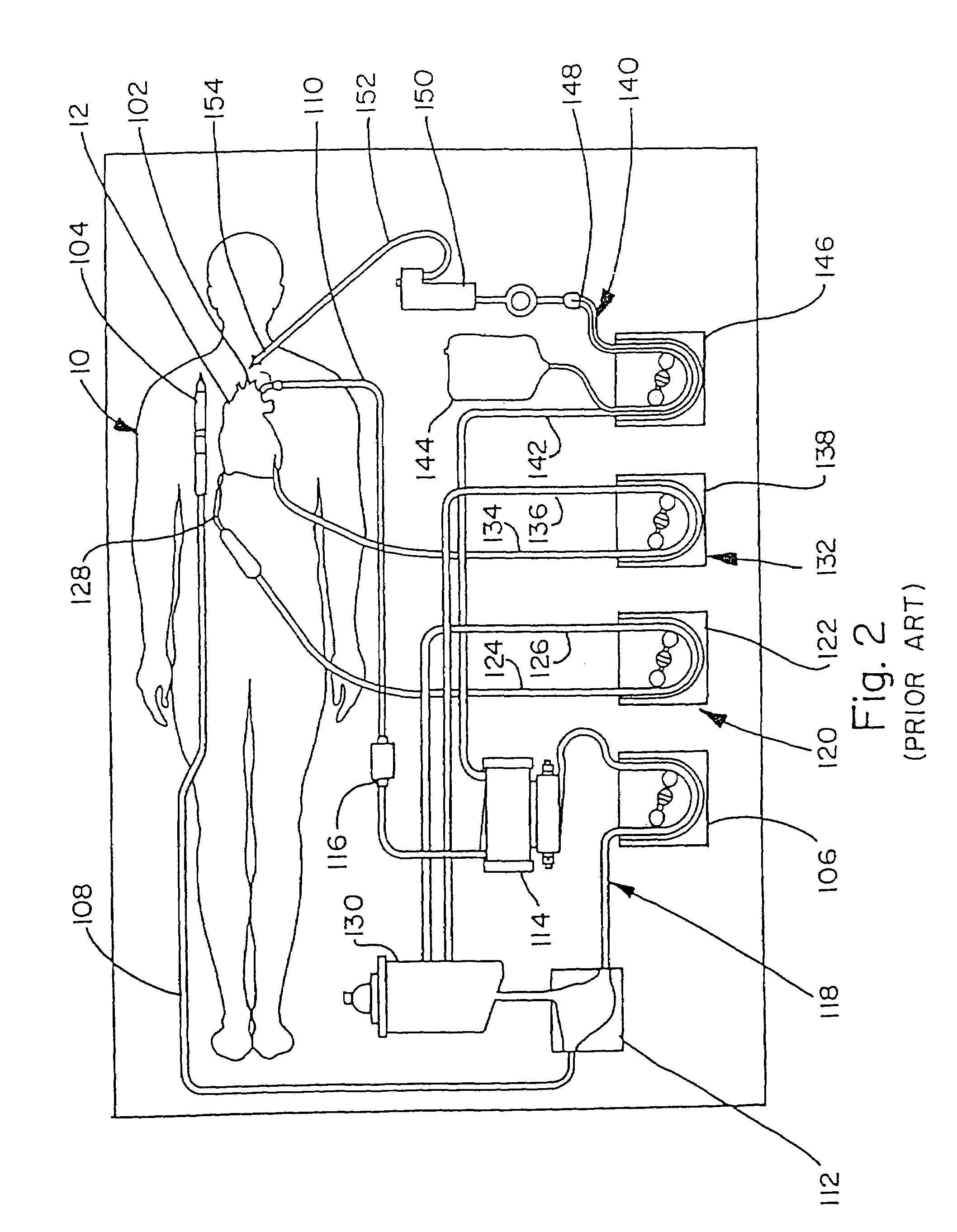Method of recovering blood from an extracorporeal circuit
a blood transfusion and extracorporeal technology, applied in the field of medical equipment, techniques and procedures, can solve the problems of significant disposal problems, anxiety, and the relative large fraction of the volume of the cpb circuit cannot be transfused, and achieve the effects of saving time, money, and eliminating the need for and anxiety associated with transfusion
- Summary
- Abstract
- Description
- Claims
- Application Information
AI Technical Summary
Benefits of technology
Problems solved by technology
Method used
Image
Examples
Embodiment Construction
[0030]FIG. 1 schematically shows a patient 10 during heart bypass surgery, wherein a cardiopulmonary bypass (CPB) system, also known as a heart / lung machine 100, is connected to the patient's heart 12. The CPB system 100 includes an arterial cannula 102 inserted into the aorta at the heart 12 and a venous cannula 104 inserted into one or both of the vena cava. Arterial pump 106 (and associated components to be described hereinafter), receives deoxygenated blood from the venous cannula 104, via inlet line 108, and delivers externally oxygenated blood via outline line 110, to the arterial cannula 102.
[0031]FIG. 2 shows additional details represented schematically, of one conventional arrangement by which the CPB system 100 is connected to the patient 10 during bypass surgery. Deoxygenated blood in the inlet line 108 enters a venous reservoir 112, which is fluidly connected to the arterial pump 106. The discharge from the pump 106 enters a heat exchanger and oxygenator 114, passes thro...
PUM
 Login to View More
Login to View More Abstract
Description
Claims
Application Information
 Login to View More
Login to View More - R&D
- Intellectual Property
- Life Sciences
- Materials
- Tech Scout
- Unparalleled Data Quality
- Higher Quality Content
- 60% Fewer Hallucinations
Browse by: Latest US Patents, China's latest patents, Technical Efficacy Thesaurus, Application Domain, Technology Topic, Popular Technical Reports.
© 2025 PatSnap. All rights reserved.Legal|Privacy policy|Modern Slavery Act Transparency Statement|Sitemap|About US| Contact US: help@patsnap.com



